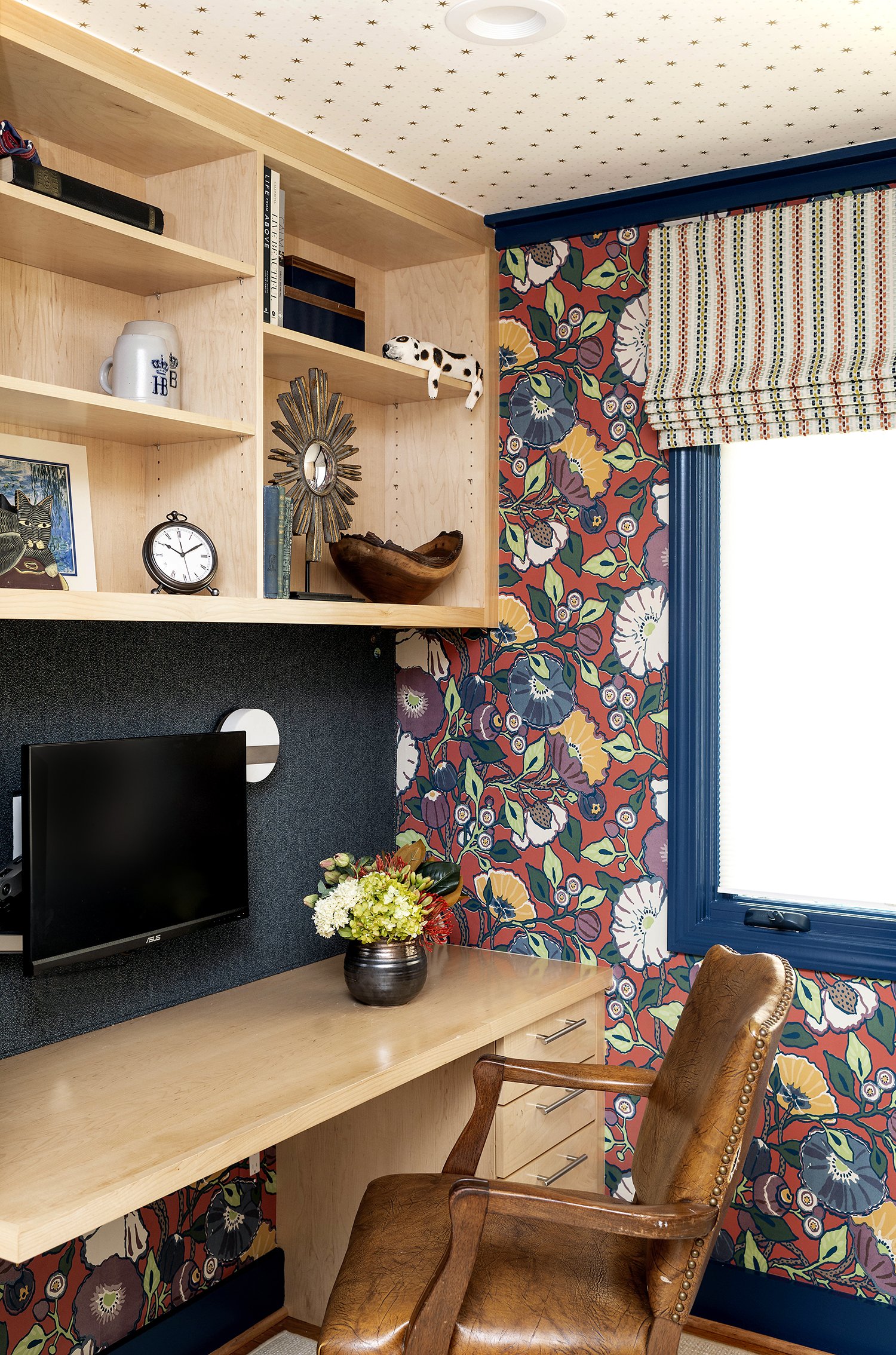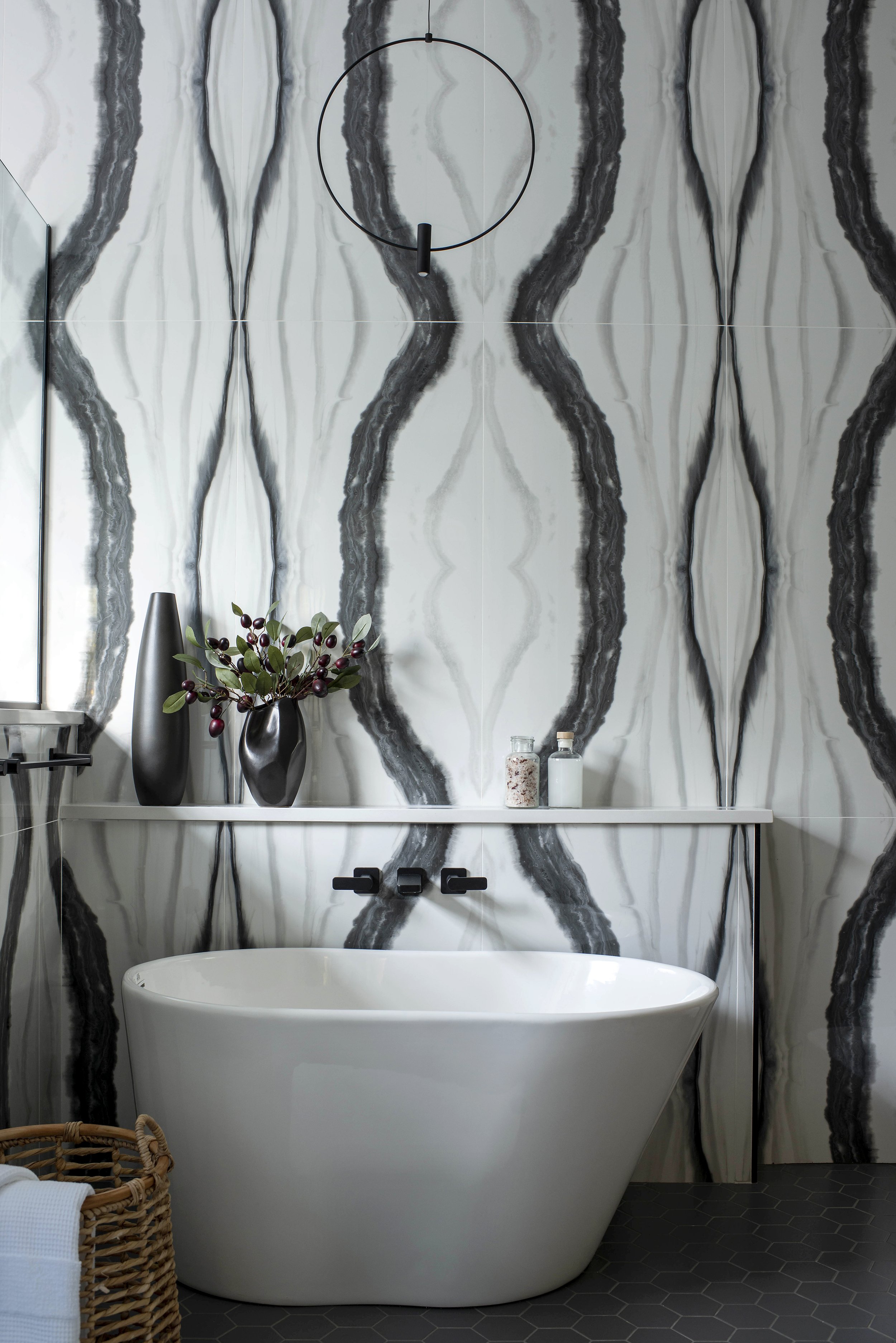What is Neuroaesthetics and why it matters when creating a timeless interior design concept
Neuroaesthetics is the study of how the brain perceives and processes aesthetic experiences, such as art, music, and design. In interior design, understanding the principles of neuroaesthetics can help create a timeless aesthetic by creating spaces that are visually pleasing and evoke positive emotional responses. Here are some ways that neuroaesthetics can be used in interior design to create a timeless aesthetic.
Color Psychology
Color is a powerful tool in interior design, and understanding how different colors impact the brain can help create a timeless aesthetic. Warm colors like red and yellow can evoke feelings of excitement and energy, while cool colors like blue and green can evoke feelings of calm and relaxation. Neutral colors like beige and gray can provide a calming backdrop for bolder colors.
In this home office, we selected a brightly colored wallpaper to keep the space lively and energized.
Lighting
Lighting can have a significant impact on the brain's perception of a space. Natural light is known to improve mood and cognitive function, so incorporating natural light into a space can help create a timeless aesthetic. Additionally, using warm light can create a cozy and inviting atmosphere, while cool light can create a more modern and sophisticated feel.
By keeping the furniture in this room “free floating” we avoid blocking the light from entering the room. It creates a “light pool” on the carpet during afternoons and early evenings that draws people into the space and makes it appear welcoming. Pay attention to the direction your windows are facing, and maximize your interior layout to make the most of the light coming in.
Texture
Texture can be used to create a sense of depth and visual interest in a space. Incorporating different textures, such as wood, stone, and textiles, can help create a timeless aesthetic. Additionally, using tactile textures, such as soft fabrics or natural materials like wood, can create a sense of comfort and relaxation.
This natural stacked stone wall, incorporated by the Design/Build Team at Will Johnson Building Company, extended from the front porch into the foyer space. We added a soft metallic wallcovering and white linen roman shades to soften the very textural element of the natural stone.
Symmetry
The human brain is naturally drawn to symmetry, so incorporating symmetrical elements in interior design can help create a timeless aesthetic. Symmetry can be achieved through the use of balanced furniture arrangements, matching decor elements, and mirrored accents.
In this bathroom renovation, we did a bookend pattern match on this ceramic wall tile to enhance the pattern and provide a calming oasis for the home owner. The bathroom is now one of their favorite places to relax and unwind after a long and stressful day!
Biophilic Design
Biophilic design incorporates natural elements into interior spaces, which has been shown to have a positive impact on the brain. Incorporating plants, natural materials, and organic shapes can help create a timeless aesthetic while also promoting well-being and reducing stress.
The simplest way to incorporate Biophilic elements is to look at natural patterns and shapes like this magnolia wallcovering from Phillip Jeffries. The ground is a hemp wallpaper which adds texture, variety and warmth to the space while adding interest in a calm and relaxing way.
I hope this helped shed some light on what exactly neuroaesthetics means and why it’s important for interior designers to have a strong knowledge base of the subject. By incorporating the principles of neuroaesthetics into interior design, it is possible to create a timeless aesthetic that is both visually pleasing and emotionally engaging. By understanding how the brain perceives and processes aesthetic experiences, designers can create spaces that evoke positive emotional responses and stand the test of time. I may be designing myself out of a job, but at least my clients love their space!





